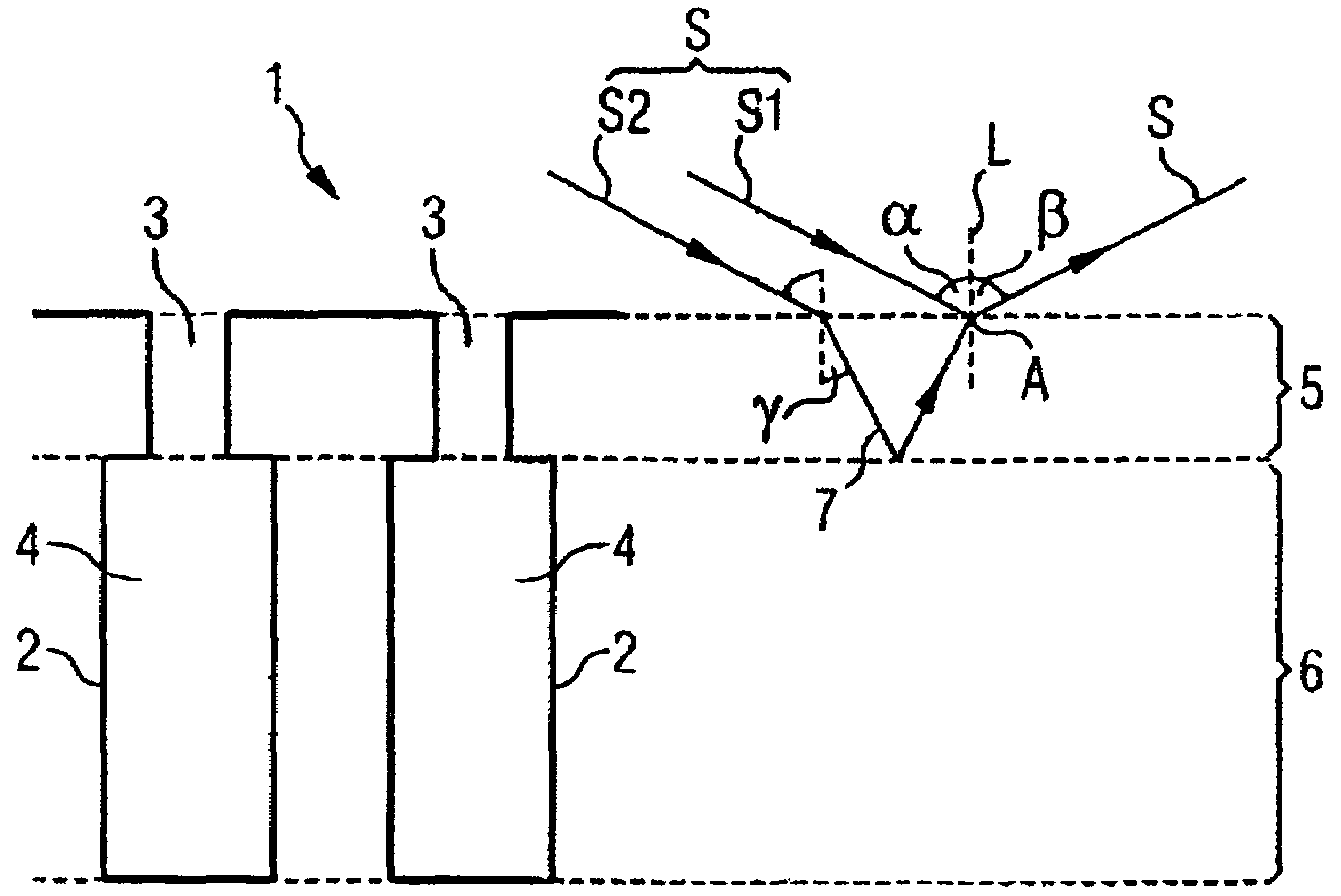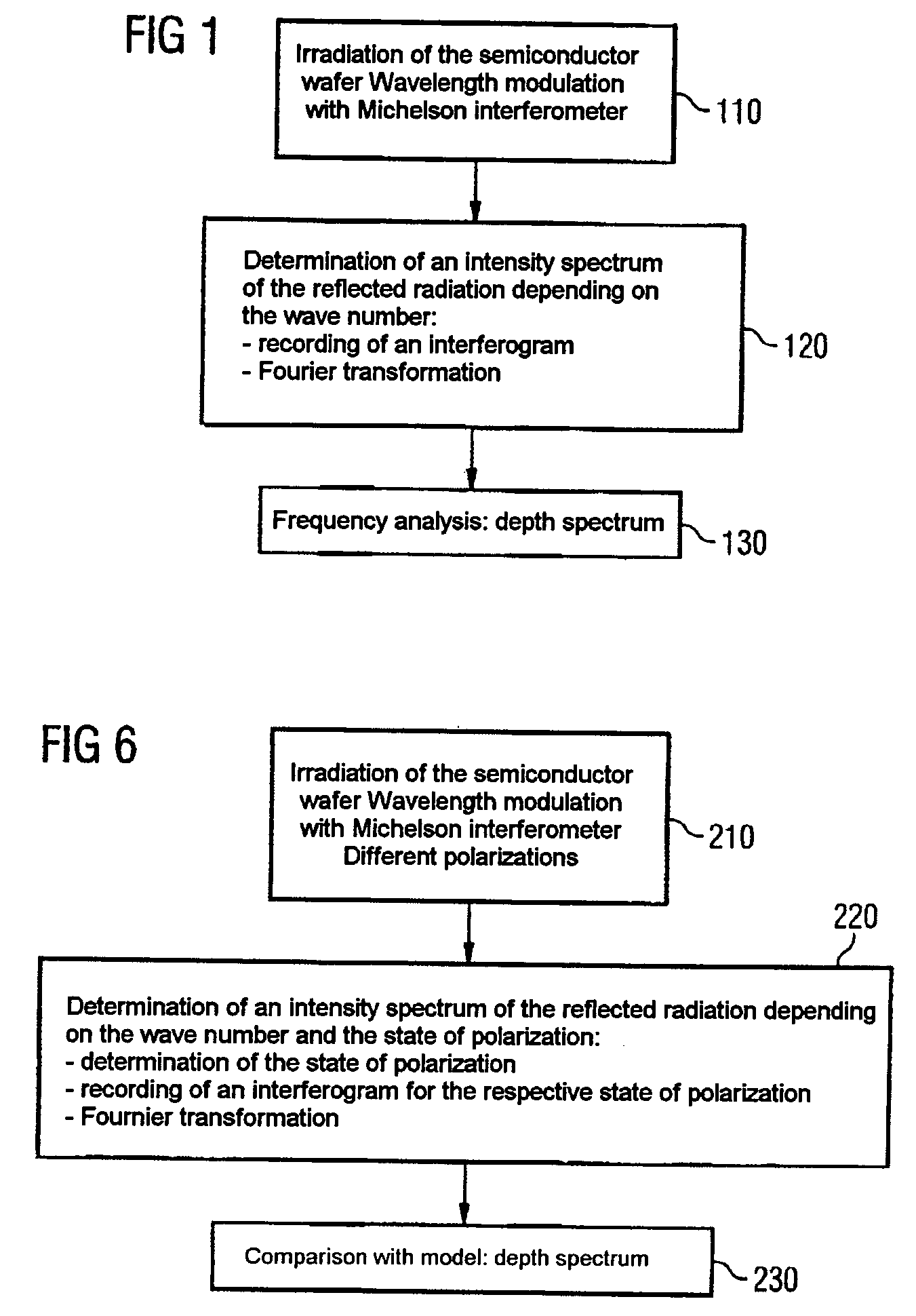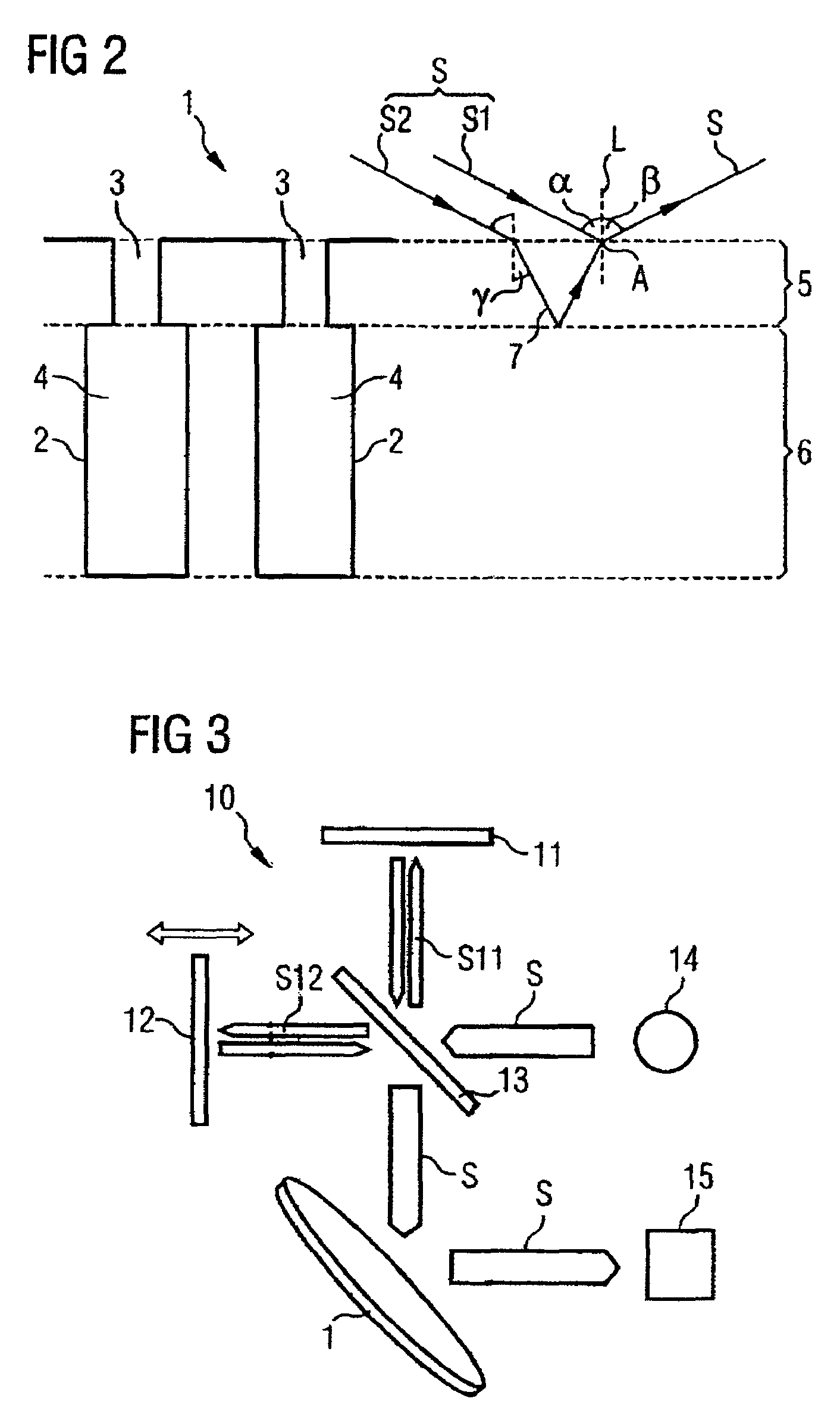Method for determining the depth of a buried structure
a technology of buried structure and depth, applied in the direction of optical radiation measurement, instruments, spectrometry/spectrophotometry/monochromators, etc., can solve the problems of complex and laborious methods, high cost, and destruction of wafers, and achieve non-destructive, cost-effective and fast results
- Summary
- Abstract
- Description
- Claims
- Application Information
AI Technical Summary
Benefits of technology
Problems solved by technology
Method used
Image
Examples
first embodiment
[0036]FIG. 1 shows a flow diagram of a method according to the invention for determining the depth of a buried structure in a semiconductor wafer. For this purpose, in 110, the semiconductor wafer is irradiated at a predetermined angle of incidence with respect to a surface of the semiconductor wafer with electromagnetic radiation in a wavelength range, the wavelengths used lying in the infrared range and being modulated in a frequency-dependent manner with the aid of a Michelson interferometer. In this case, the modulation of the wavelengths is dependent on the position of a movable mirror of the Michelson interferometer.
[0037]In 120, an intensity spectrum of the reflected radiation is determined depending on the wave number of the wavelength range of the radiated-in electromagnetic radiation at an angle of reflection—corresponding to the angle of incidence—with respect to the surface of the semiconductor wafer. Stepp 120 can be split into two substeps. In a first substep, the inte...
second embodiment
[0059]FIG. 6 shows a flow diagram of a method according to the invention. In this case, in 210, the semiconductor wafer is irradiated at a predetermined angle of incidence with respect to a surface of the semiconductor wafer with electromagnetic radiation in the infrared range, the wavelengths again being modulated in a frequency-dependent manner with the aid of a Michelson interferometer. The radiation is additionally oriented in different polarization directions or states of polarization.
[0060]Step 220 involves determining an intensity spectrum of the radiation reflected at the surface of the semiconductor wafer depending on the wave number and the state of polarization, which is altered by the reflection. Step 220 can be subdivided into three substeps. A first substep involves determining the state of polarization of the reflected radiation. A second substep involves recording an interferogram for the respective state of polarization and a third substep involves converting this i...
third embodiment
[0065]The determination of the depth of a buried structure in a semiconductor wafer can also be effected by means of an angle-dependent intensity spectrum with respect to a predetermined wavelength, instead of a wave-number-dependent intensity spectrum. In this respect, FIG. 8 shows a flow diagram of a method according to the invention.
[0066]In this case, in 310, the semiconductor wafer is irradiated at different angles of incidence or a continuously tuned range of angles of incidence with respect to a surface of the semiconductor wafer with electromagnetic radiation having a predetermined wavelength lying in the infrared range, and in 320 involves recording an intensity spectrum of the radiation reflected at the semiconductor wafer at angles of reflection corresponding to the angles of incidence with respect to the surface of the semiconductor wafer.
[0067]An intensity spectrum determined in this way depending on the angles of reflection includes information about constructive and d...
PUM
| Property | Measurement | Unit |
|---|---|---|
| wavelengths | aaaaa | aaaaa |
| wavelengths | aaaaa | aaaaa |
| depth | aaaaa | aaaaa |
Abstract
Description
Claims
Application Information
 Login to View More
Login to View More - R&D
- Intellectual Property
- Life Sciences
- Materials
- Tech Scout
- Unparalleled Data Quality
- Higher Quality Content
- 60% Fewer Hallucinations
Browse by: Latest US Patents, China's latest patents, Technical Efficacy Thesaurus, Application Domain, Technology Topic, Popular Technical Reports.
© 2025 PatSnap. All rights reserved.Legal|Privacy policy|Modern Slavery Act Transparency Statement|Sitemap|About US| Contact US: help@patsnap.com



